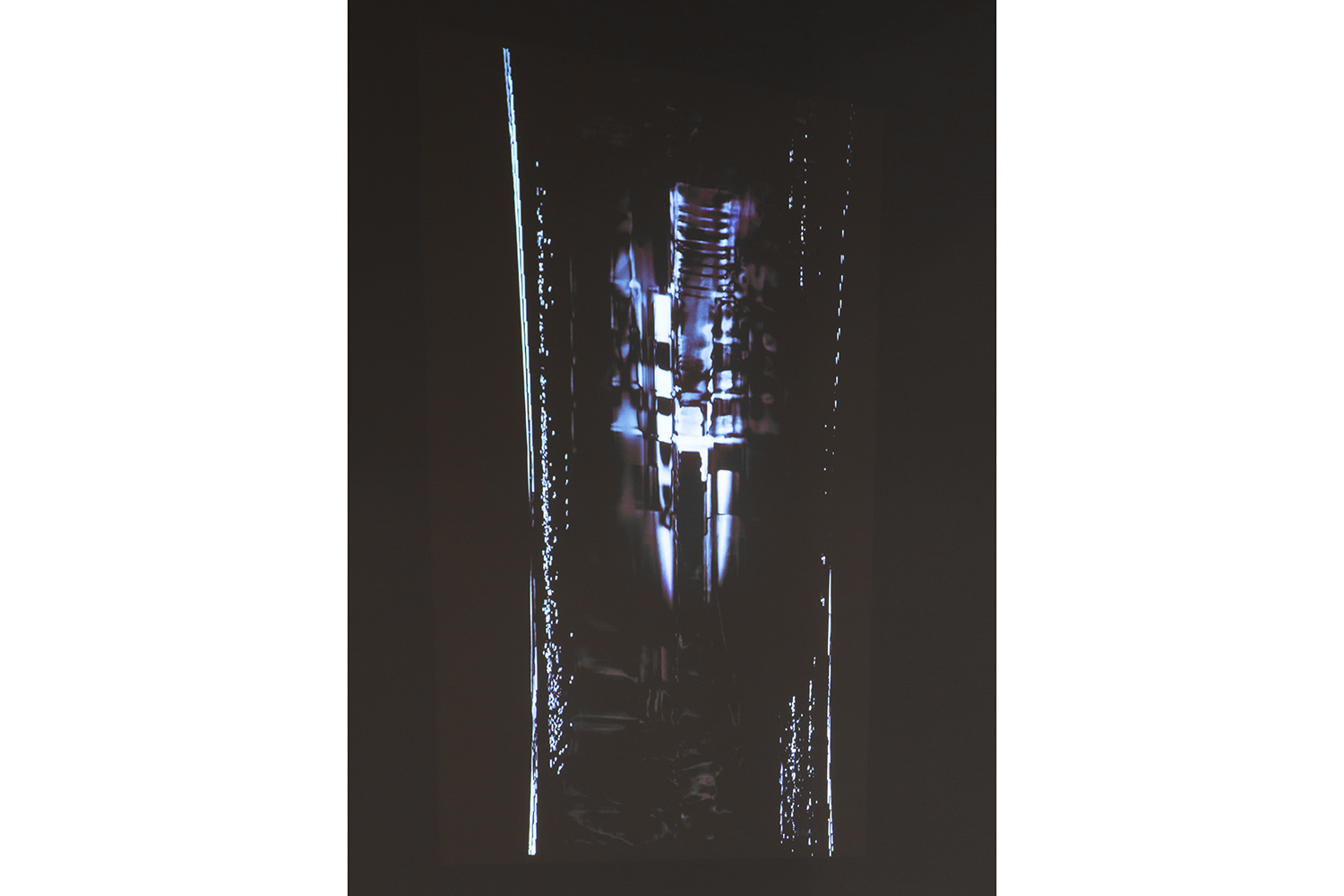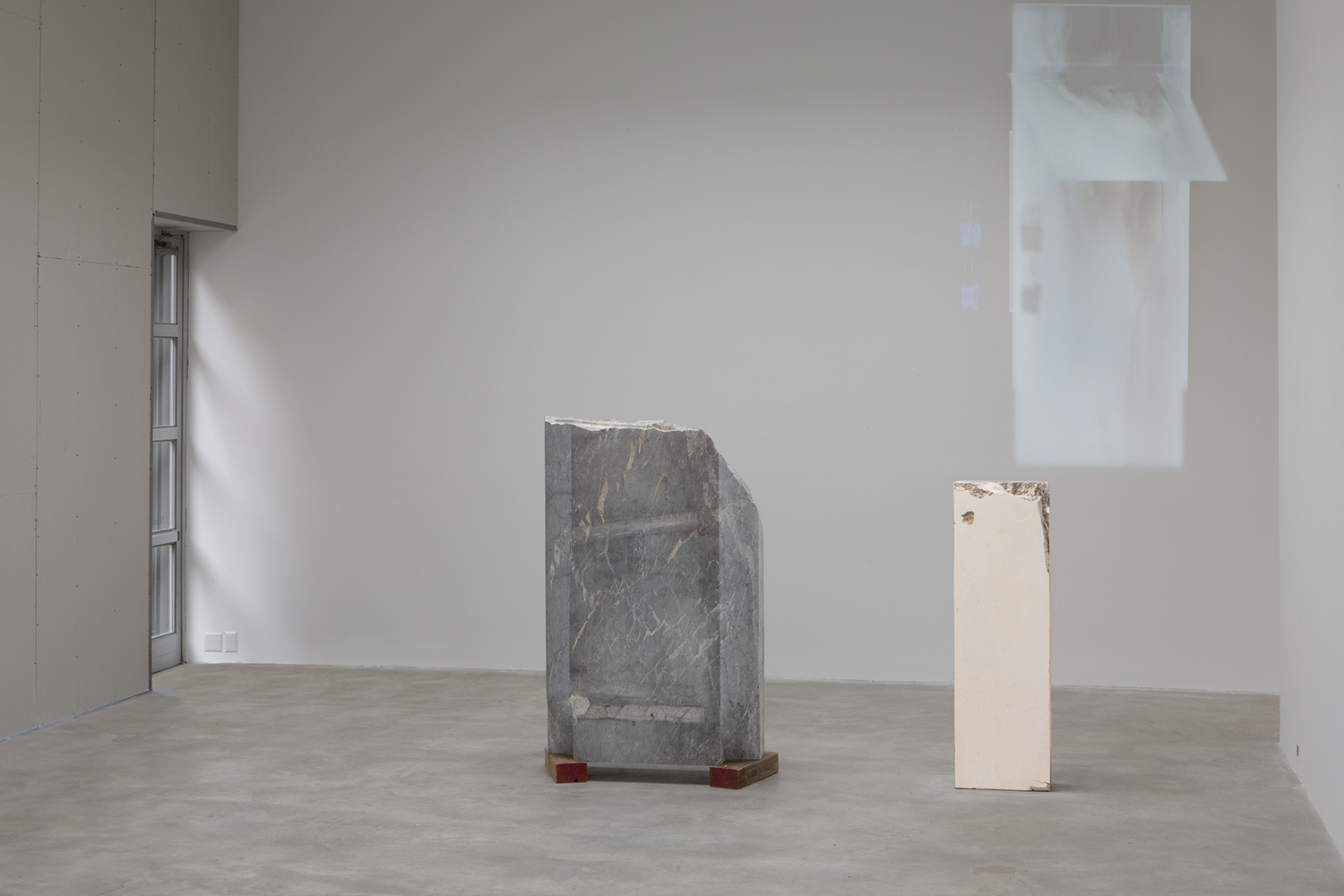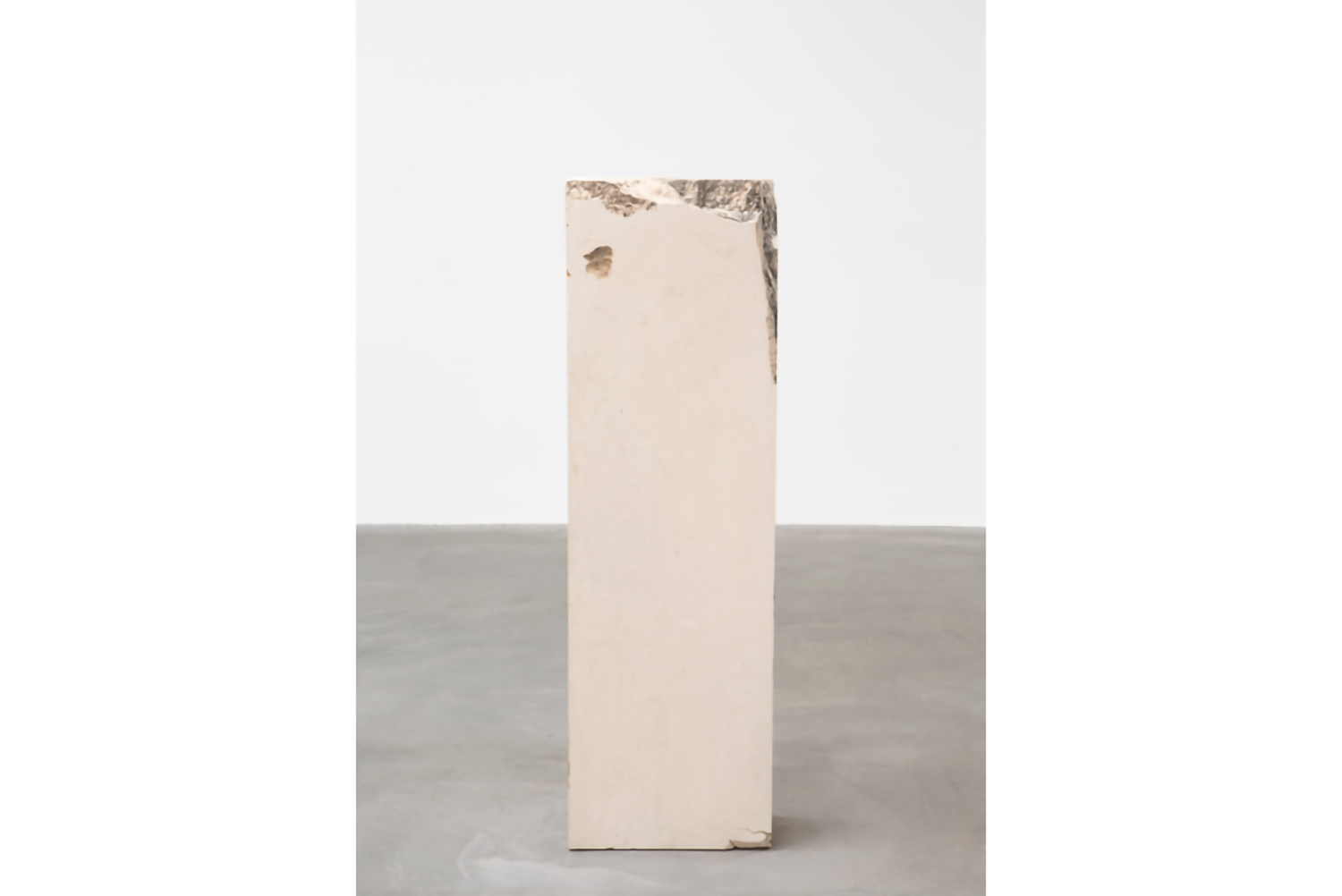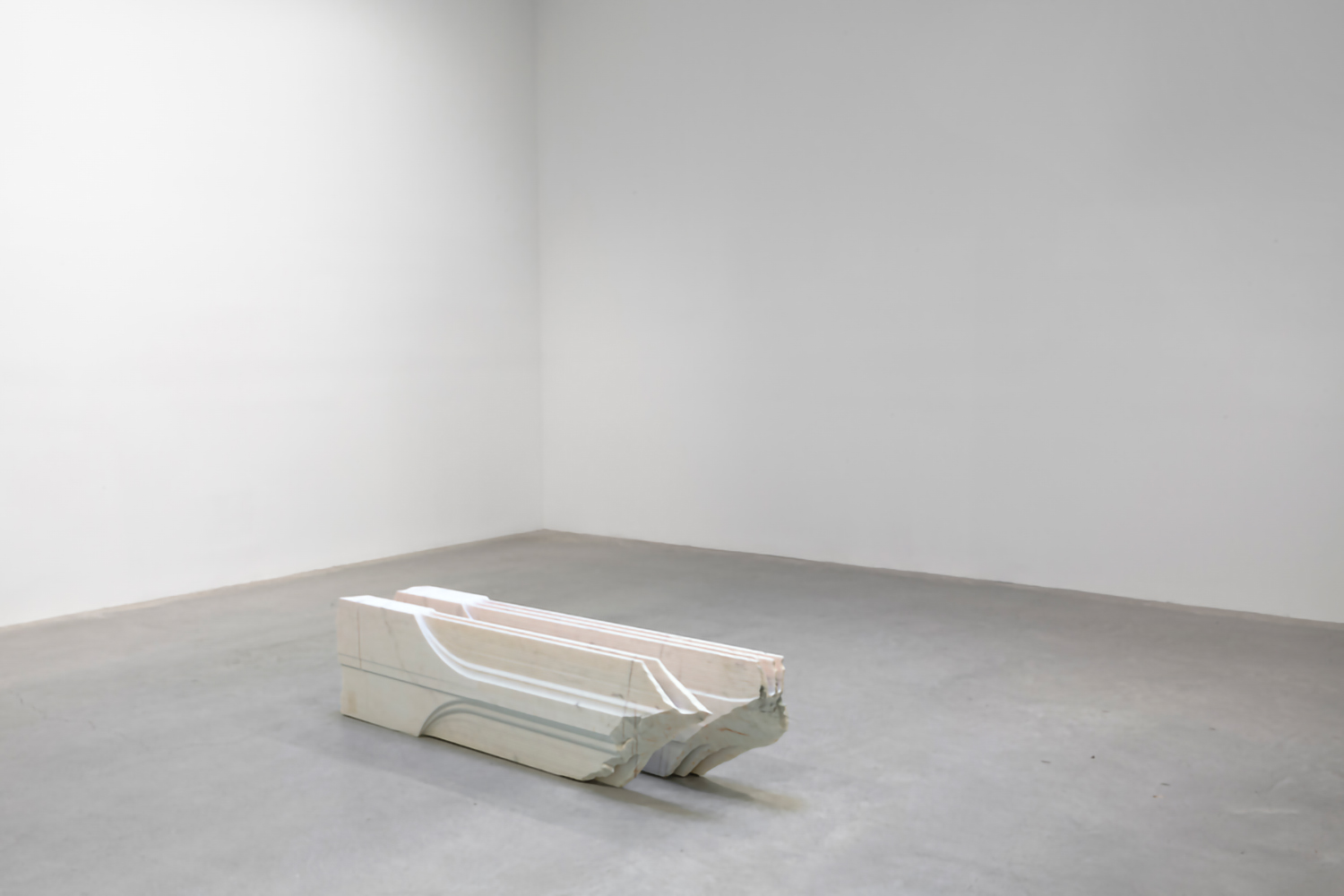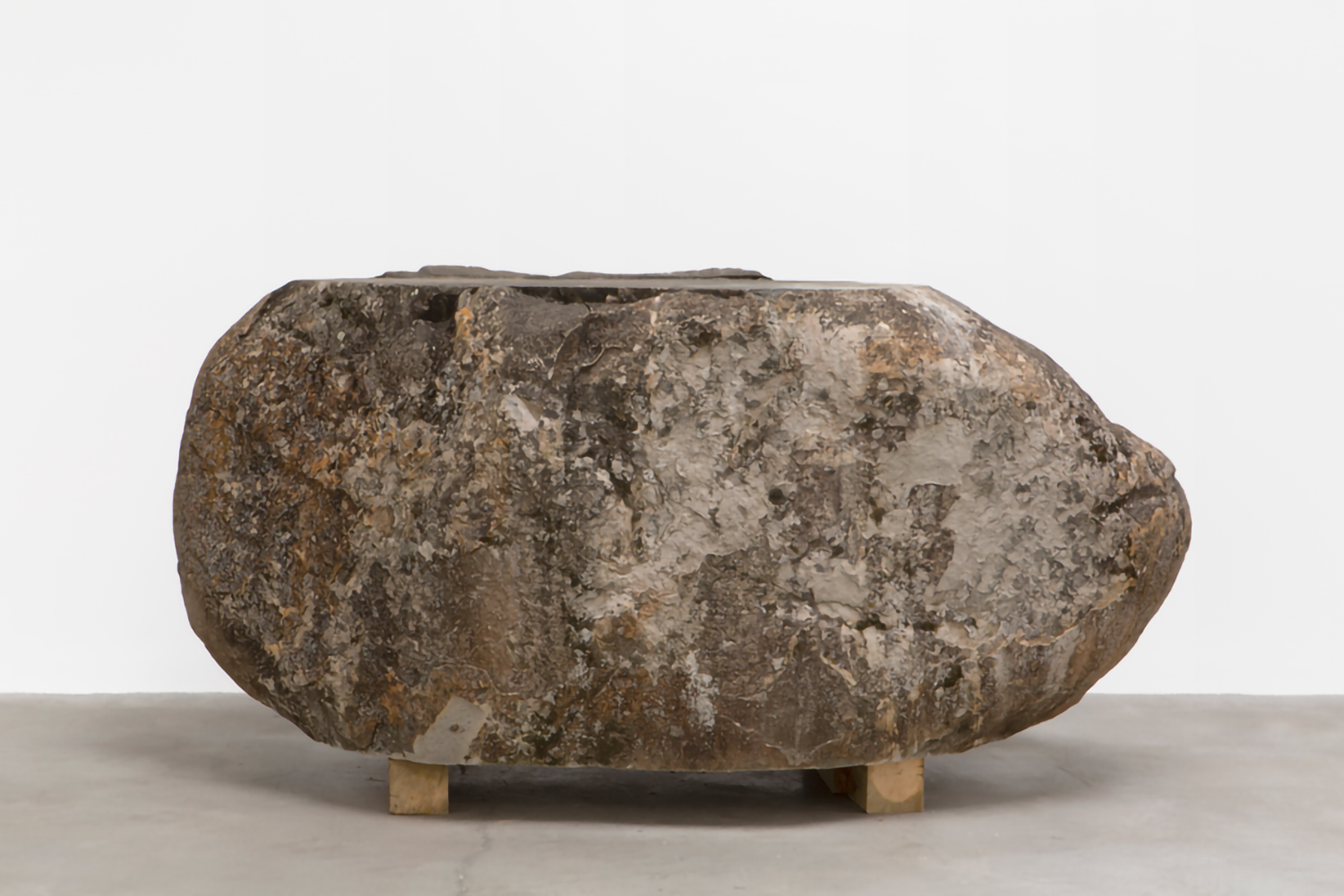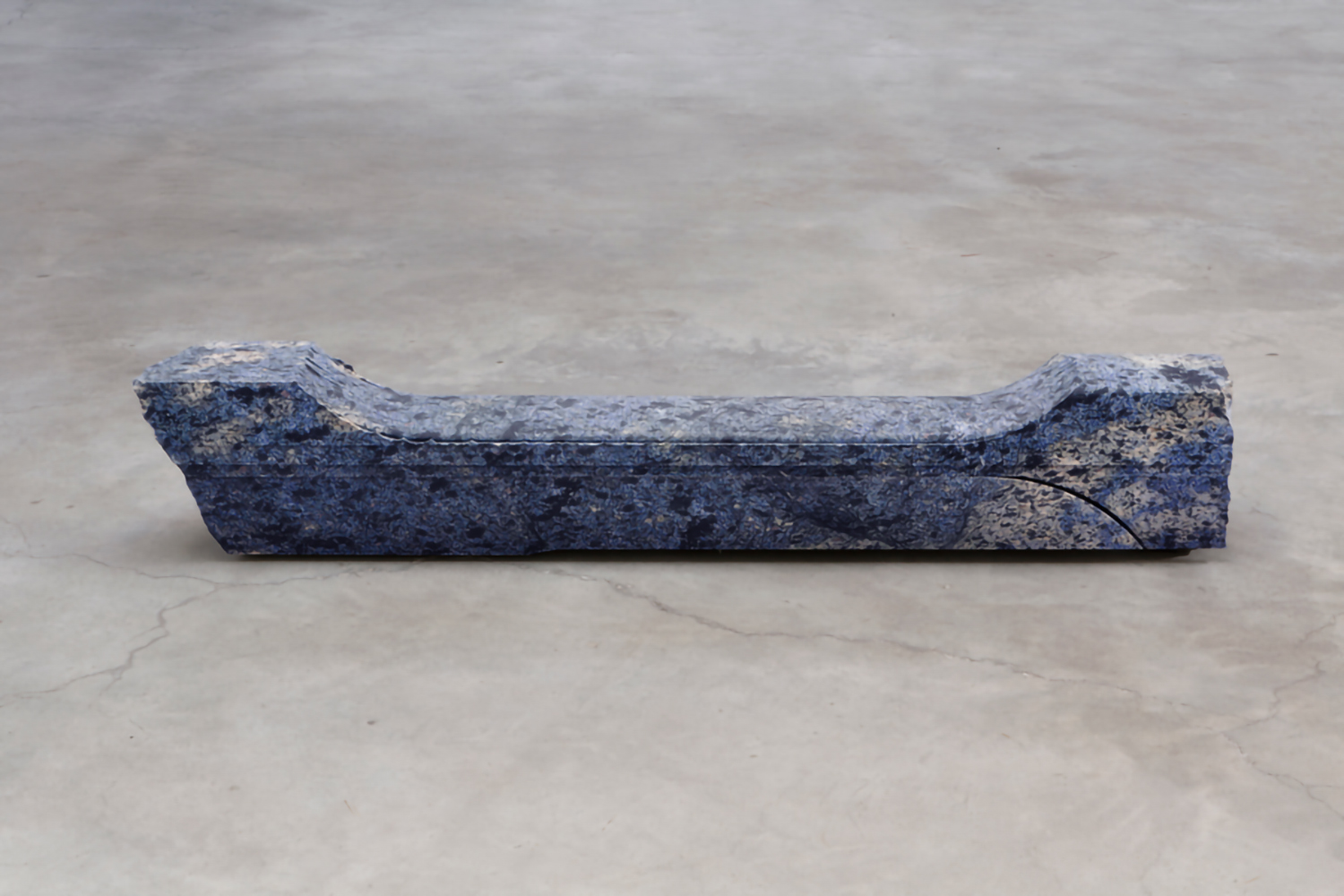In 1974, the CIA green-lit a 350-million-dollar cover-up operation to salvage a sunken Soviet sub from the depths of the Pacific Ocean. Hidden in plain sight, the top-secret rescue spawned the “Glomar response,” crafted to elude journalistic inquisition: “We can neither confirm nor deny the existence of the information requested but, hypothetically, if such data were to exist, the subject matter would be classified and could not be disclosed.” The slogan is now ubiquitous, parroted by everyone from Kylie Jenner to the NYPD, but Trisha Donnelly remains its most fascinating artistic partisan.Donnelly’s solo exhibition at Matthew Marks, characteristically opaque and sans press release, collects six new untitled sculptures alongside three blurred projections. Formally, the series of marble plinths that populate the gallery take up the legacy of minimalism — but unlike its adherents Judd and Serra, whose well-known industrial processes are part and parcel of their work, little is known about Donnelly’s fabrication methods. Her undecipherable slabs were, at some point, pulled from quarries. Probably in Italy, the gallery assistant tells me. I’m unable to verify, which is maybe the point: taking Judd’s assertion that methods are irrelevant so long as they result in art’s logical extreme, Donnelly lays an inscrutable series of objects before us and insists that in this pure absence of didacticism we make for ourselves what we will. Donnelly’s exhibition invites a meditative form of curiosity. The absence of a structuring narrative invites close viewing in its stead, drawing attention to the sculptures’ juxtaposing surfaces: flawless smoothness, serrated grain. In the front room, a dim digital image appends three scattered granite hunks, clustered according to an unknowable logic. The works are spaced atypically, quietly resisting the linear standardization of minimalism past and proper. During the day, the surrounding projections are barely discernible; once the sun sets, the sculptures are lit dimly by design. Only part of the show is fully visible at any given time — another subtle jab at the precision of Donnelly’s progenitors? Perhaps. We can neither confirm nor deny.
4 February 2020, 6:13 pm CET
Trisha Donnelly Matthew Marks / New York by Adina Glickstein
by Adina Glickstein February 4, 2020WELCOME TO SUNNYDALE Mining the American suburban fantasy through a widely varied output, Olivia Erlanger expands the limits of sculptural thinking
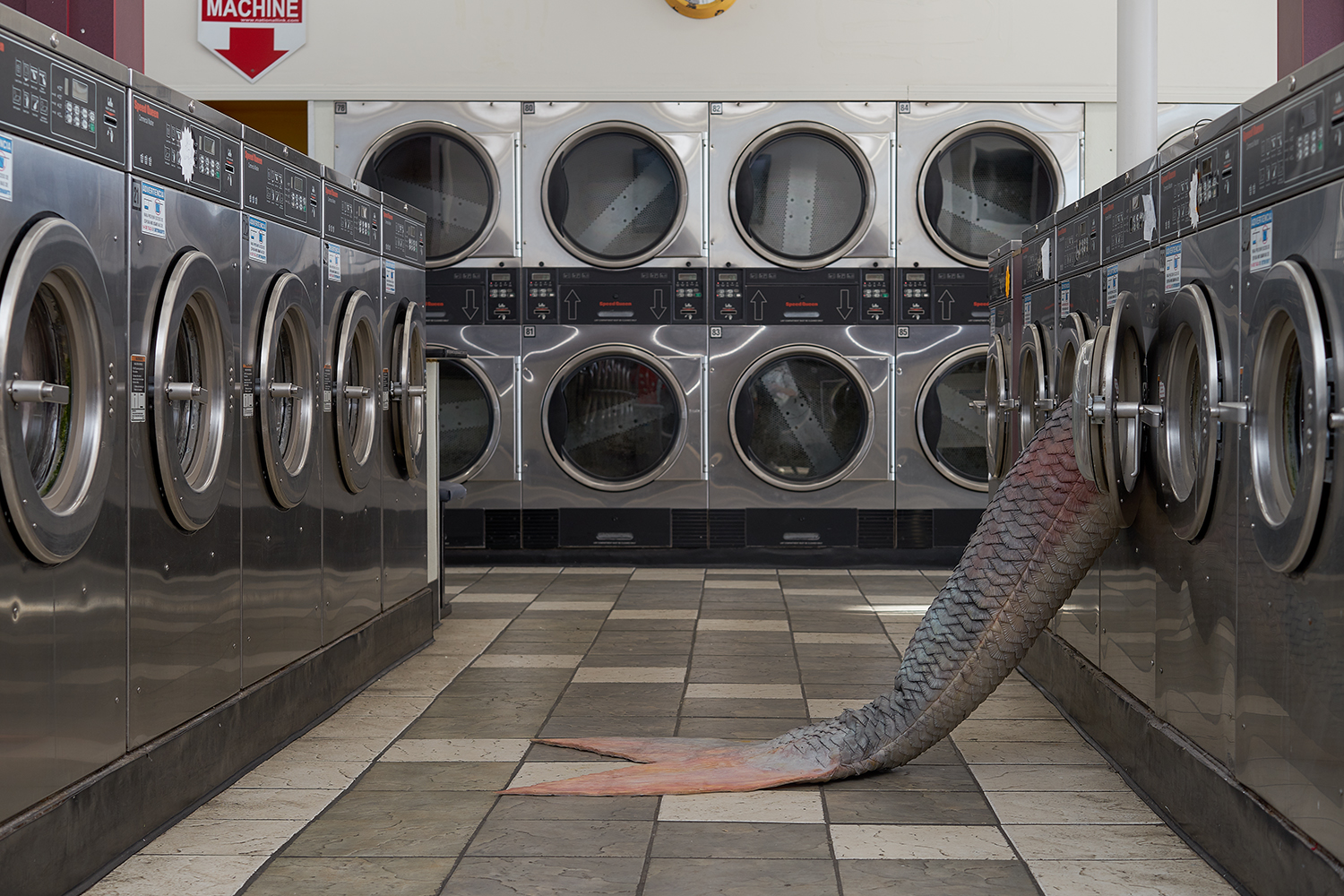
Olivia Erlanger politely asks me to hold the call while she scrolls diligently through her screen cap folder. The lengthy…
Hans Haacke New Museum / New York
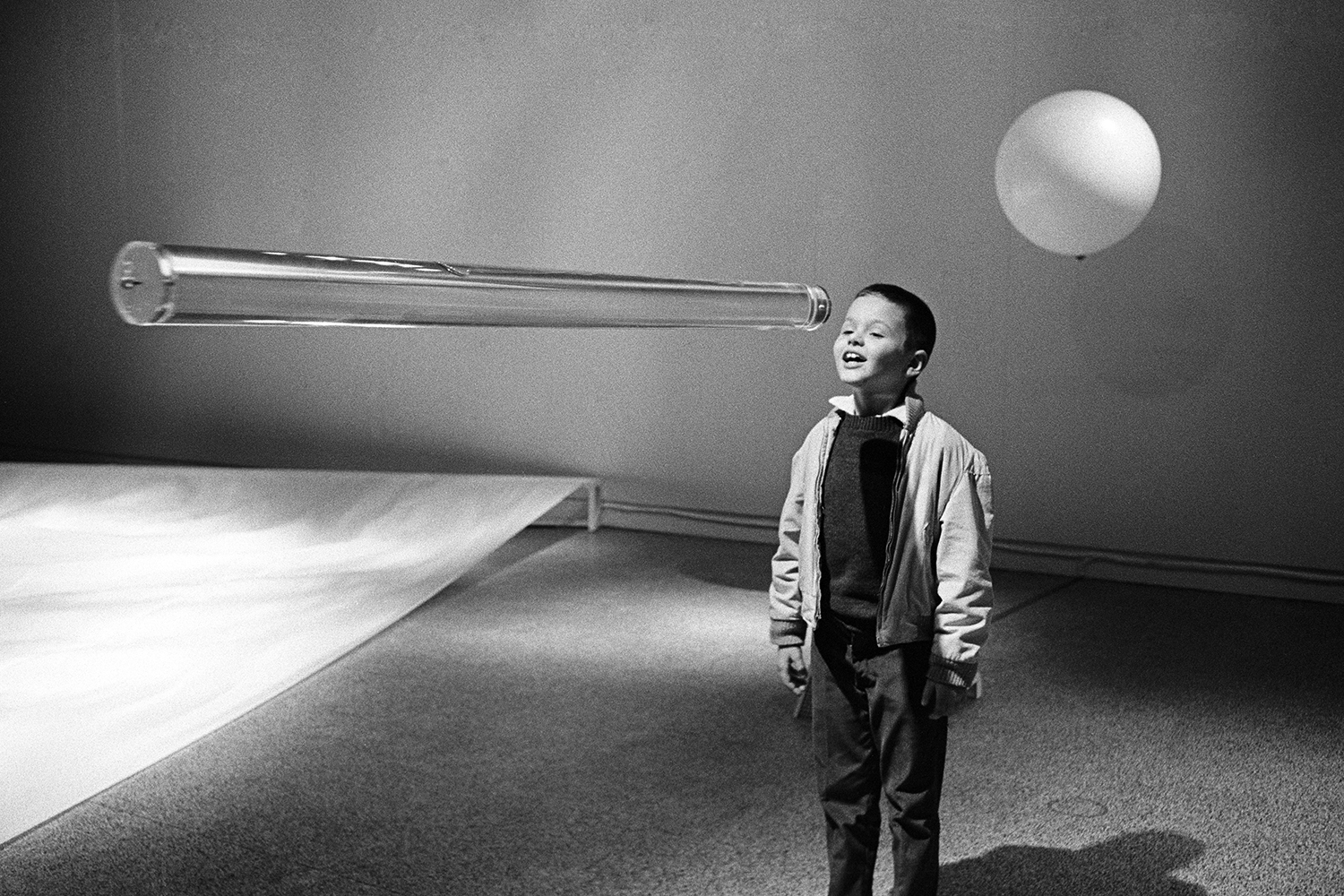
Spread across four floors and spanning six decades, Hans Haacke’s retrospective at the New Museum — his first museum show…
Jessi Reaves Herald St / London
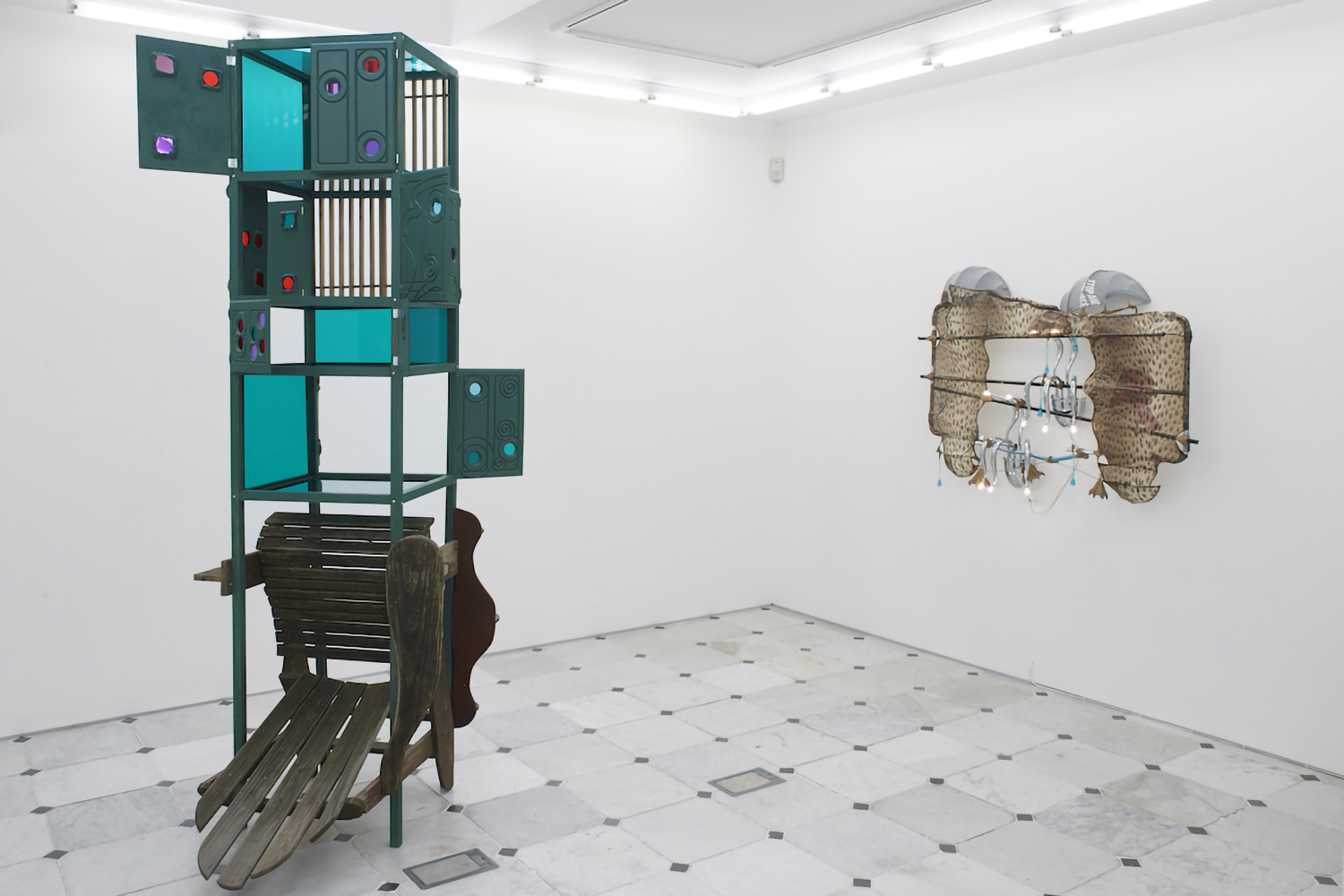
Jessi Reaves’s New outfit standing container (all works 2019) is a darkling. Three antilopine console legs support an upturned, cankered…
Nam June Paik Tate Modern / London
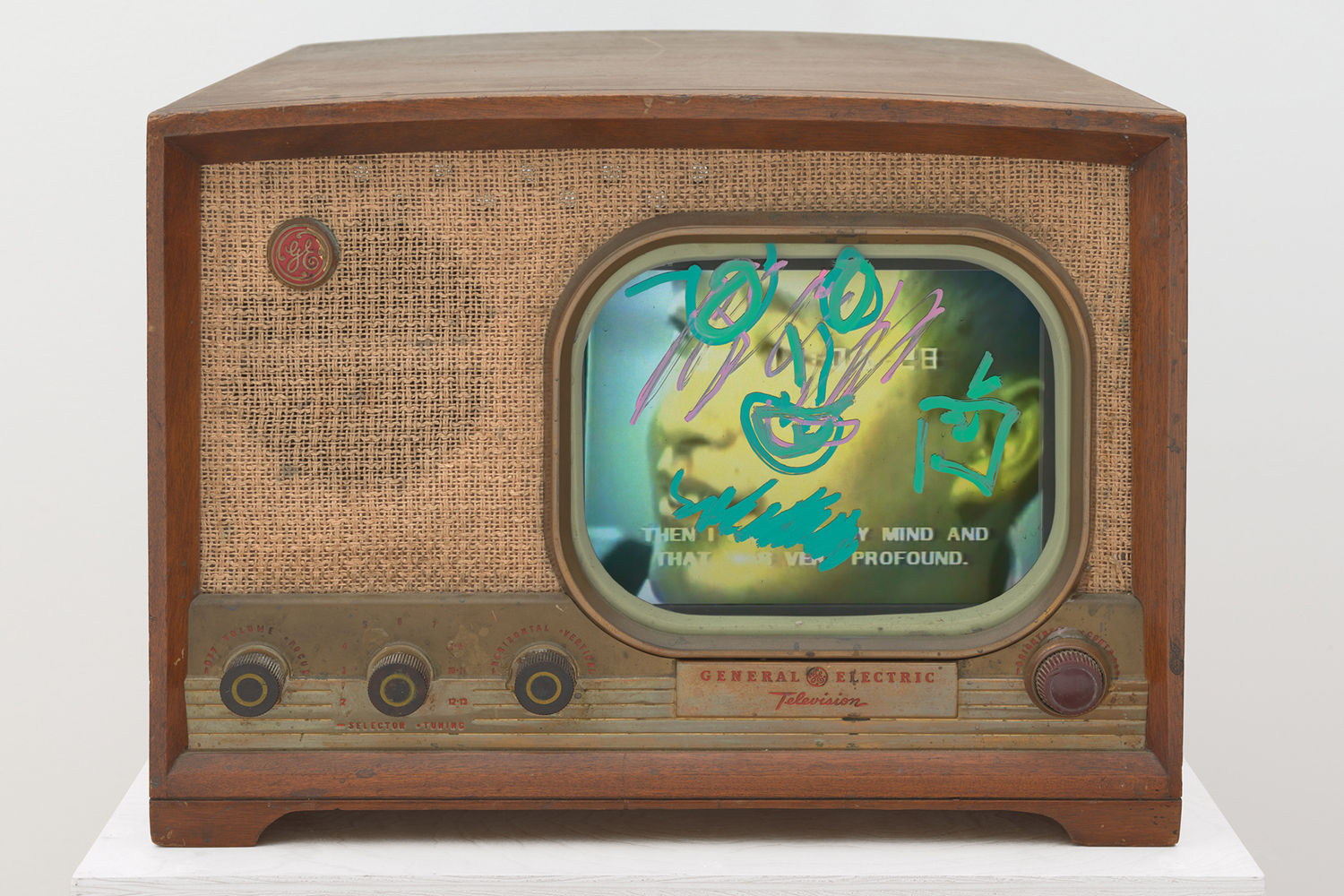
Tate Modern’s Nam June Paik survey is zeitgeisty — immersive and Instagrammable, like Olafur Eliasson’s concurrent show in the Switch…


